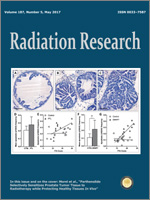Radiation treatment of head and neck cancer frequently causes severe collateral damage to normal tissues including mouth mucosa, salivary glands and skin. This toxicity limits the radiation dose that can be delivered and affects the patient's quality of life. Previous studies in mice and nonhuman primates showed that entolimod, a toll-like receptor 5 (TLR5) agonist derived from bacterial flagellin, effectively reduced radiation damage to hematopoietic and gastrointestinal tissues in both total-body and local irradiation scenarios, with no protection of tumors. Here, using a mouse model, we analyzed the efficacy of entolimod administered before or after irradiation in reducing damage to normal tissues. Animals received local fractionated radiation to the head and neck area, thus modeling radiotherapy of head and neck cancer. Tissue damage was evaluated through histomorphological examination of samples collected at different time points up to four weeks, mice were exposed locally to five daily fractions of 5, 6 or 7 Gy. A semiquantitative scoring system was used to assess the severity of observed pathomorphological changes. In this model, radiation damage was most severe in the lips, tongue and skin, moderate in the upper esophagus and minor in salivary glands. The kinetics of injury appearance and recovery of normal morphology varied among tissues, with maximal damage to the tongue, esophagus and salivary glands developing at earlier times (days 8–11 postirradiation) relative to that of lip and skin mucosa (days 11–15 postirradiation). While both tested regimens of entolimod significantly reduced the extent of radiation damage and accelerated restoration of normal structure in all tissues analyzed, administration of entolimod 1 h after each irradiation was more effective than treatment 30 min before irradiation. These results support the potential clinical use of entolimod as an adjuvant for improving the therapeutic index of head and neck cancer radiotherapy by reducing the radiation toxicity in normal tissues.
How to translate text using browser tools
21 March 2017
Mitigation of Radiation-Induced Epithelial Damage by the TLR5 Agonist Entolimod in a Mouse Model of Fractionated Head and Neck Irradiation
Ilia A. Toshkov,
Anatoli S. Gleiberman,
Vadim L. Mett,
Alan D. Hutson,
Anurag K. Singh,
Andrei V. Gudkov,
Lyudmila G. Burdelya
ACCESS THE FULL ARTICLE

Radiation Research
Vol. 187 • No. 5
May 2017
Vol. 187 • No. 5
May 2017




